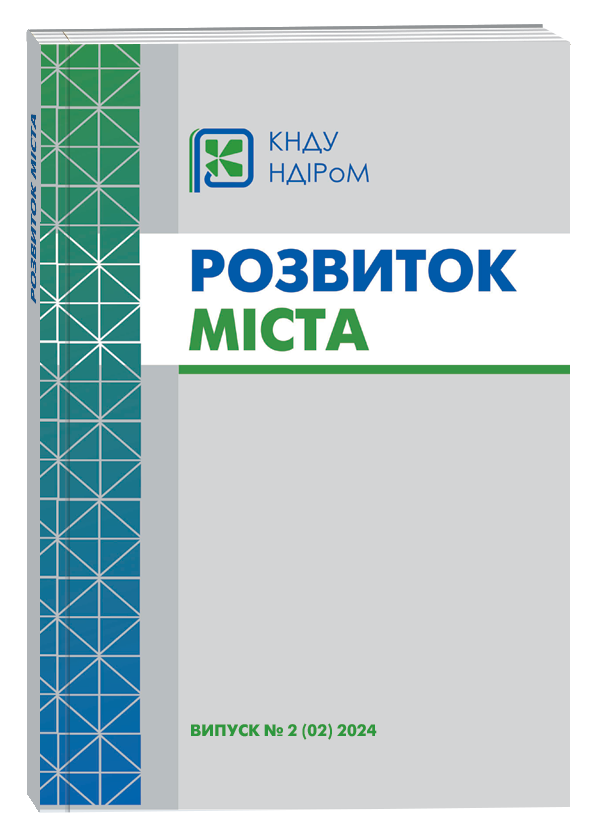FEATURES OF THE FUNCTIONING OF THE ORGANIZATIONAL AND ECONOMIC RISK MANAGEMENT MECHANISM WITHIN THE FRAMEWORK OF THE ANTI-CRISIS STRATEGY
DOI:
https://doi.org/10.32782/city-development.2024.2-8Keywords:
crisis management, risk management, organizational-economic mechanism, enterprise resilience, strategic planningAbstract
The article examines the features of the functioning of the organizational and economic risk management mechanism (OERM) in the context of the implementation of the anti-crisis strategy. This mechanism is an integrated approach that combines elements of risk management and crisis management to ensure the sustainability and adaptability of the enterprise in conditions of crisis and uncertainty. The main attention is paid to the analysis of key elements of environmental economic management, such as identification and assessment of risks, strategic planning and adaptation of the enterprise to changes in the external environment. The article emphasizes the importance of integrating crisis management into the strategic planning process, which allows enterprises to respond to threats in a timely manner and use crises as opportunities for growth. Approaches to the interaction of crisis management and risk management are considered, a comparative analysis of their elements is provided, and recommendations are offered for improving the economic management system to increase the competitiveness and sustainability of business. In conclusion, it is emphasized that the successful functioning of OEMUR contributes to the long-term development of the enterprise and ensures its readiness to overcome crisis situations.
References
Miller K. D., & Waller H. G. (2003) Scenarios, real options and integrated risk management. Long Range Planning, no. 36(1), pp. 93–107. Available at: https://www.researchgate.net/publication/222959635_Scenarios_Real_Options_and_Integrated_Risk_Management
Grant R. M. (2003) Strategic planning in a turbulent environment: Evidence from the oil majors. Strategic Management Journal, no. 24(6), pp. 491–517. DOI: https://doi.org/10.1002/smj.314
Pearson C. M., & Clair J. A. (1998) Reframing crisis management. The Academy of Management Review, no. 23(1), pp. 59–76. DOI: https://doi.org/10.5465/amr.1998.192960
Mitroff II, Shrivastava P., & Udwadia F. E. (1987) Effective crisis management. Academy of Management Perspectives, no. 1(4), pp. 283–292. Available at: https://cectresourcelibrary.info/document/effective-crisis-management/effective-crisis-management-2/
Pauchant T. C., Mitroff II (1992) Transforming the Crisis-Prone Organization: Preventing Individual, Organizational, and Environmental Tragedies. San Francisco, Calif.: Jossey-Bass. Available at: https://collection.sl.nsw.gov.au/record/74VKZ6Zb8Omb
Fink S. (1986) Crisis Management: Planning for the Inevitable (illustrated ed.). American Management Association, p. 245. Available at: https://books.google.bg/books/about/Crisis_Management.html?id=yEp9QgAACAAJ&redir_esc=y
Burnett J. J. (1998) A strategic approach to managing crisis: A practical guide to crisis management. Public Relations Review, no. 24(4), pp. 475–488. DOI: https://doi.org/10.1016/S0363-8111(99)80112-X
Mintzberg H. (1994) The Rise and Fall of Strategic Planning. New York: Free Press. Available at: https://hbr.org/1994/01/the-fall-and-rise-of-strategic-planning
Ritchie B. W. (2004) Chaos, crises and disasters: A strategic approach to crisis management in the tourism industry. Tourism Management, no. 25(6), pp. 669–683. DOI: https://doi.org/10.1016/j.tourman.2003.09.004
Wang J., Hutchins H. M., & Garavan T. N. (2009) Exploring the strategic role of human resource development in organizational crisis management. Human Resource Development Review, no. 8(1), pp. 22–53. DOI: https://doi.org/10.1177/1534484308330018
Shrivastava P. (1993) Crisis theory/practice: Towards a sustainable future. Industrial & Environmental Crisis Quarterly, no. 7(1), pp. 23–42. DOI: https://doi.org/10.1177/108602669300700103
Preble J. F. (1997) Integrating the crisis management perspective into the strategic management process. Journal of Management Studies, no. 34(5), pp. 769–791. Available at: https://ideas.repec.org/a/bla/jomstd/v34y1997i5p769-791.html



